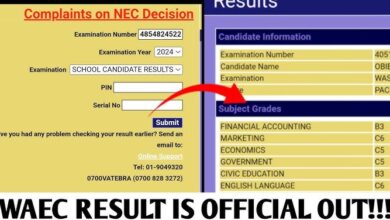How Many Innings Are In A High School Baseball Game? (Find Out)
How Many Innings Are In A High School Baseball Game? In the realm of high school baseball, understanding the fundamental aspects of the game, including its duration and structure, is crucial for players, coaches, and enthusiasts alike.
One commonly asked question is, “How many innings are in a high school baseball game?”
Unraveling the layers of this inquiry involves delving into the rules, regulations, and unique characteristics that define high school baseball competitions.
This guide not only sheds light on the standard inning count but also touches upon factors influencing game length, pitching limits, and variations across leagues.
Join us as we navigate the intricacies of high school baseball to grasp the dynamics of its inning format.
Also Read:
- How Long Are High School Football Games? (Find Out)
- How Long Is Trade School for an Electrician? (Find Out)
How Many Innings Are In A High School Baseball Game?
High school baseball games typically consist of seven innings, mirroring the structure commonly found in professional baseball.
This standardized inning count is designed to strike a balance between the time constraints of school schedules and the need for a comprehensive and competitive game.
Each inning comprises two halves – the top and bottom – with both teams having the opportunity to bat and play defense.
The seven-inning format serves as a foundation for high school baseball, providing a manageable timeframe for games while ensuring a fair and strategic competition.
However, it’s essential to note that this standard may vary depending on regional or state-level rules and regulations.
Some areas might adopt different inning counts, perhaps due to specific athletic association guidelines or as part of an effort to align with broader baseball norms.
Pitching limits play a significant role in high school baseball and contribute to the determination of inning count.
To safeguard the well-being of young pitchers, many high school leagues impose restrictions on the number of pitches a player can throw in a game or within a specified timeframe.
This introduces an additional layer of complexity, as teams and coaches must carefully manage their pitching staff to adhere to these limits and maintain a competitive edge.
Weather conditions can also influence the inning count in high school baseball games.
Inclement weather, such as rain or darkness, may lead to game interruptions or cancellations.
In such cases, leagues often have established rules regarding the completion or rescheduling of games, ensuring fairness and consistency in the face of unpredictable elements.
While the seven-inning norm prevails, it’s crucial for players, coaches, and spectators to familiarize themselves with the specific rules governing high school baseball in their respective regions.
These variations contribute to the rich tapestry of high school sports, highlighting the adaptability of the game while preserving its core principles of fairness and competition.
Understanding the inning structure in high school baseball enhances appreciation for the sport’s nuanced dynamics, creating a more immersive and enjoyable experience for all involved.
Inning Structure in High School Baseball
The inning structure in high school baseball is a fundamental aspect that dictates the flow and dynamics of the game.
A standard high school baseball game is divided into seven innings, each consisting of two halves – the top and bottom.
During the top half of the inning, the visiting team takes their turn at bat, attempting to score runs against the home team’s defense.
In contrast, the bottom half sees the home team at bat, responding to the offensive efforts of the visiting team.
Each half-inning is further subdivided into three outs, with an out occurring when a defensive team successfully retires three opposing players.
Outs are typically achieved through methods such as striking out a batter, catching a hit ball before it reaches the ground, or forcing a baserunner out.
The goal is to limit the opposing team’s offensive opportunities while strategically advancing one’s own.
The inning structure serves as a strategic framework for coaches and players. Teams must adeptly balance offensive and defensive prowess to secure victories.
Pitching rotations, batting orders, and defensive strategies are carefully orchestrated to maximize performance within this structured framework.
In high school baseball, this inning structure also accommodates the development of players.
The concise nature of the game allows young athletes to refine their skills and gain valuable experience in a regulated setting.
It fosters a competitive environment while instilling discipline and teamwork.
While the seven-inning format is predominant, regional or state-level variations may exist, influenced by league-specific rules or regulations.
Understanding the inning structure is essential for players, coaches, and fans, as it forms the backbone of high school baseball strategy and competition.
This structured approach not only defines the rhythm of the game but also contributes to the development of skills and sportsmanship among high school athletes.
Also Read:
Factors Influencing Game Length
Several factors contribute to the varying lengths of high school baseball games, influencing the duration of play and adding an element of unpredictability to each match.
One primary factor is the efficiency of pitching on both sides.
The effectiveness of pitchers in retiring batters swiftly or, conversely, the ability of batters to extend at-bats through fouls and patient approaches can significantly impact the overall pace of the game.
Umpire decisions and their interpretation of the strike zone can also influence game length.
A consistently tight strike zone may lead to more walks and longer plate appearances, while a broader zone could result in quicker at-bats.
The umpire’s discretion in making close calls on the field can introduce an element of unpredictability, affecting the flow of the game.
Defensive prowess and strategies employed by teams also play a role.
Exceptional fielding and quick defensive plays can expedite the innings, while errors, misplays, or deliberate efforts to slow down the game may extend playtime.
Additionally, managerial decisions, such as making frequent pitching changes or strategic substitutions, can impact the pace and length of the game.
High school baseball games are also subject to time constraints imposed by league regulations or state athletic associations.
These constraints may include time limits for regular-season games or restrictions on extra innings in case of a tie.
These rules aim to balance competitive play with the practicalities of school schedules, ensuring that games are completed within a reasonable timeframe.
Weather conditions constitute another variable affecting game length.
Rain delays, lightning concerns, or other adverse weather events can interrupt play, leading to extended stoppages and, in some cases, postponed or rescheduled games.
Ultimately, the interplay of these factors creates a dynamic and evolving landscape within high school baseball, where each game unfolds uniquely.
Coaches, players, and fans must adapt to the ever-changing circumstances, making the sport both challenging and exciting.
Understanding these factors provides a more comprehensive perspective on the nuances that contribute to the length and intensity of high school baseball contests.
Frequently Asked Questions (FAQ)
How Many Overs are there in Baseball?
Baseball does not have overs; the concept of overs is specific to cricket. In baseball, the game is divided into innings, not overs.
Each inning consists of two halves, during which both teams have the opportunity to bat and play defense.
The team on offense aims to score runs, while the defensive team attempts to prevent runs.
The number of innings in a baseball game is typically seven at the high school level, nine in professional leagues, and can vary based on league or tournament rules.
How Many Minutes Is a Baseball Inning?
The duration of a baseball inning is not fixed in terms of minutes, as it varies based on gameplay factors.
An inning concludes when the defensive team records three outs, which can take varying amounts of time.
Factors influencing inning length include pitching changes, defensive plays, and offensive strategies.
On average, an inning may last around 20 minutes, but this can significantly fluctuate.
Time limits may be imposed in certain game situations or leagues, impacting the overall duration of each inning and the game as a whole.
What Is a Win in Baseball?
In baseball, a win refers to a statistical credit given to a pitcher who is the most effective in leading their team to victory.
For a starting pitcher, a win is awarded when they complete at least five innings, and their team maintains the lead for the rest of the game.
Relief pitchers can also earn a win under specific circumstances.
The pitcher must be the one on the mound when their team takes the lead for the final time.
Wins are a key metric for evaluating a pitcher’s success, although they don’t always reflect an individual’s performance accurately due to team dynamics.
Conclusion
The inning structure of a high school baseball game, typically comprising seven innings, is a fundamental aspect that shapes the rhythm and strategy of play.
This standardized format allows for a balance between competitive gameplay and practical considerations within the school schedule. However, variations may exist across regions and leagues.
Understanding the inning structure is crucial for players, coaches, and enthusiasts alike, as it not only defines the framework of the game but also influences pitching rotations, defensive strategies, and overall game dynamics.
Embracing this structured approach enhances appreciation for the nuanced and strategic nature of high school baseball.
Related Posts:
- Should Phones Be Allowed in School? (Find Out)
- Is Real Estate Investment Trusts a Good Career Path? (Find Out)






